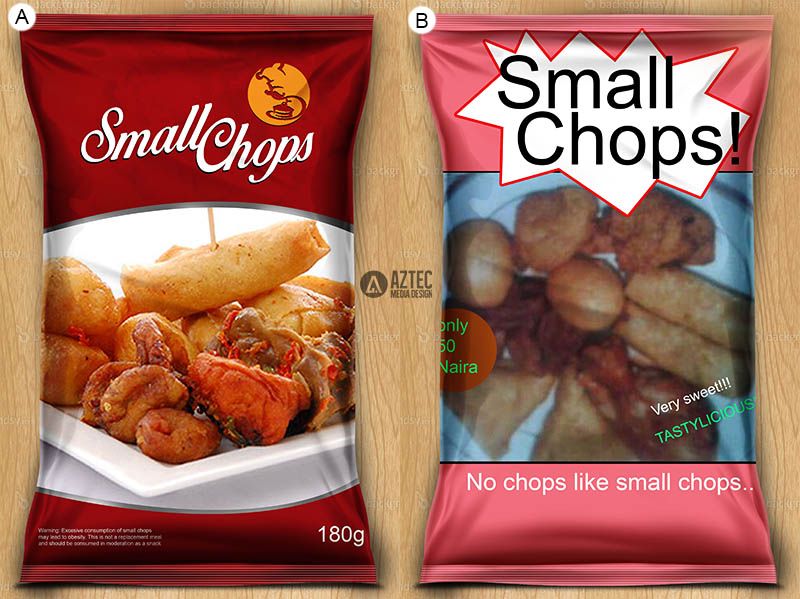Let’s face it, regardless of whether you realize it or not, the Nigerian customer is changing and so are their expectations. To be successful, newcomers in any given market have to ensure that they are able to differentiate themselves from the competition, and pioneers in new fields need to make sure they stand out enough to get noticed.
As someone involved in graphic/product design, I can tell you that the old ideologies associated with company logos and products no longer seem to work with the modern day customer. Although there were some who cared deeply about their design and presentation, most companies in the past did not pay it very much attention and could slap on the least attractive packaging onto a competitive product. This in turn hurt the success of that product as the customers began to get more selective about the products they buy.
So how do you get around this selection process and ensure your company/product is at least on equal footing with the rest? This can be achieved by changing one’s standards. There is a phrase I sometimes hear – “That looks good…. For a ‘Nigerian’ product”. This phrase is part of the problem that some companies need to get around. One should not only be looking at so called ‘Nigerian’ standards when developing their appearance, but general/international standards. As customers get more and more exposed to products from all over the world, their tastes become a lot more refined as to what catches their eye. Particularly in this day and age with huge outlets with a plethora of international products like “Shoprite”, one needs to ensure that logos/product designs can stand their ground with the international competition.
Of course depending on your company/product this may not entirely apply as some things are catered directly towards the Nigerian market. However, this particular kind of market is fast becoming a niche exception and it is important that one takes steps to ensure that they do not miss out on opportunities due to improper presentation.
Here is a simple example (not real products) of what I am referring to by presentation:

Both designs represent the same the same product and you would be surprised at how many people are okay with going with option “B”. Of course that would probably be before they have seen option “A” however, but it is important to know when your product is not on par with competitive standards. Some feel the need to crowd their product designs with as much information as possible and end up ruining the presentation. If I had to pick either of these 2 options off the supermarket shelf, it would be a no-brainer to go for option “A”. Option A strikes me as more professional, more likely to be safe (lot’s of food health concerns), more reputable, and the list could really go on. It wouldn’t matter if option “B” contained the better product because it would have already been dismissed simply based on its greatly inferior appearance.
So how can you avoid becoming the option “B” especially when life doesn’t provide you such a simple side by side comparison of what your product could look like?
I have included a few tips below that can help as a mini guideline when acquiring a product design/logo or rebranding an existing one.
- Has it been done before?
The easiest way to have your product blend in and not stand out from the competition is if it looks a lot like the competition. Certain markets may argue that it boosts their sales when they look like the competition as people may confuse their products with the leading brand and buy it instead. This is a very short sighted course of action and will do nothing to create an identity for your brand, or even worse, create the label of your company being a copycat. A quick and easy fix to this problem is to do your research. Ensure that your logo/product is unique enough for people to tell the difference.
- Who is in charge of designing your logo/product?
Some who do not realize the significance their appearance can have in this current day will try to cut corners and go for a ‘cheap’ alternative. Cheap in quotes because this may not exactly refer to the cost of the design, but mostly pertains to the result. One could find a designer with relatively low costs who produces excellent results or one with really large costs that provides unsatisfactory results. The important part is that it looks good and presentable at the end of the day.
- Ask friends/family for their opinion
It is very easy to tunnel vision on a design especially when one has an idea in mind. Although not always a problem, it is important to get feedback and opinions from people you can trust to give you their take on the design in question. This does not mean that you would need to follow every little criticism that comes your way about your idea but it will certainly help in providing an outside perspective. You may then use that input to refine your idea or solidify your resolve on a design choice.
- Compare with others
Ask yourself the question “what makes my look different/more interesting than the competition?” This is a little different from asking if it has been done before because it deals with what qualities your product will exhibit now that it looks different. You certainly don’t want your product to look different, but inferior. If you find it difficult to decide which one of your competitors probably have the nicest looking designs then feel free to ask others for help. You can then take those top results and determine whether or not your design is in a position to compete.
- Do not be afraid to refresh your look
A lot of companies tend to refresh the look of their packaging or even logo’s from time to time, and for good reason. Refreshing your look without losing your brand identity is a great way to keep your customers interested and attract new ones.
There may be a lot more to consider regarding a company logo but these are some really good tips to set you on the right path. It is important to realize just how much of an impact the appearance of your logo/product has in acquiring customers, and these tips will help you attract the modern day customer (Nigerian or not), if followed correctly.

